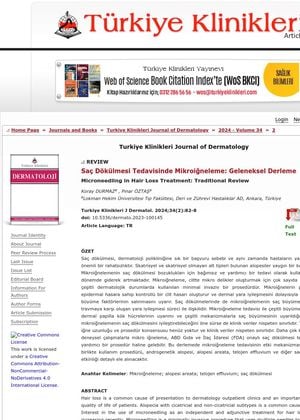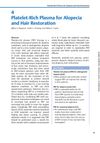Microneedling in Hair Loss Treatment: Traditional Review
January 2024
in “
Turkiye Klinikleri Journal of Dermatology
”

TLDR Microneedling shows promise for hair loss but needs more research.
The review highlights the growing interest in microneedling for hair loss treatment due to its minimally invasive nature and ability to stimulate hair growth through controlled skin injury and wound healing. It promotes the release of growth factors and dermal papilla stem cells. However, clinical data are limited, and there is no standardized needle length or procedure. The review suggests that more extensive and multi-center studies could establish microneedling as a key or adjunctive procedure in FDA-approved hair loss treatments. It also discusses its effectiveness in various types of alopecia, including androgenetic alopecia, alopecia areata, and telogen effluvium.




